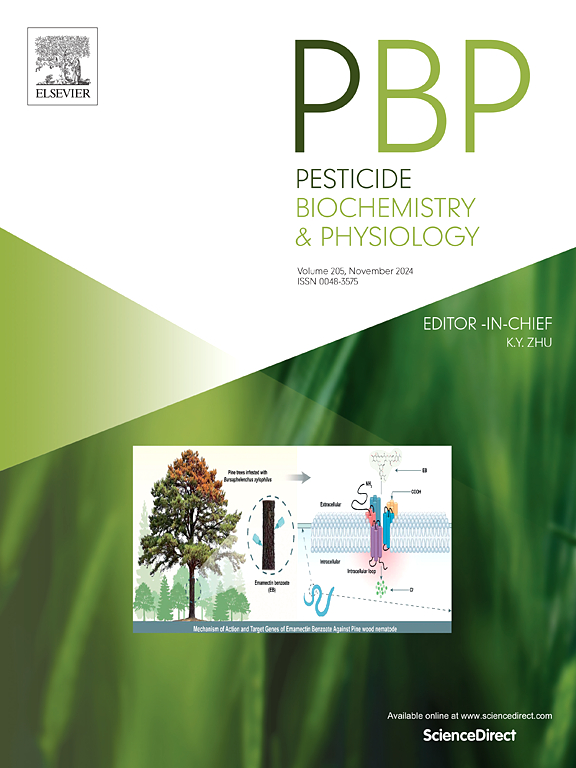Identification of a new lineage of pheromone receptors in mirid bugs (Heteroptera: Miridae)
IF 4.2
1区 农林科学
Q2 BIOCHEMISTRY & MOLECULAR BIOLOGY
引用次数: 0
Abstract
Sex pheromones, typically released by females are crucial signals for the reductive biology of insects, primarily detected by sex pheromone receptors (PRs). A clade of PRs in three mirid bugs, Apolygus lucorum, Adelphocoris lineolatus, and Adelphocoris suturalis, has been found to respond to pheromones, (E)-2-hexenyl butyrate (E2HB) and hexyl butyrate (HB), with higher sensitivity to E2HB. In this study, we aimed to identify PRs responsible for the other two pheromone components, HB and (E)-4-oxo-2-hexenal (4-OHE), by using a combination of phylogenetic analyses, sequence similarity analyses, and in vitro functional studies. As a result, five new candidate PRs (AlucOR34, AlinOR9, AlinOR10, AsutOR9, and AsutOR10) positioned outside of the previously known PR clade were identified. All five PRs were found to respond to both E2HB and HB, with some PRs exhibiting a significant and sensitive binding to HB. However, PRs for 4-OHE remains unidentified. Overall, our study suggests that mirid bugs have evolved two distinct lineages of PRs with similar response profiles. This research offers valuable insights into sex pheromone recognition within the peripheral olfactory system and contributes to the identification of PRs in mirid bugs, providing new targets for developing the behavioral regulators for these insects.

求助全文
约1分钟内获得全文
求助全文
来源期刊
CiteScore
7.00
自引率
8.50%
发文量
238
审稿时长
4.2 months
期刊介绍:
Pesticide Biochemistry and Physiology publishes original scientific articles pertaining to the mode of action of plant protection agents such as insecticides, fungicides, herbicides, and similar compounds, including nonlethal pest control agents, biosynthesis of pheromones, hormones, and plant resistance agents. Manuscripts may include a biochemical, physiological, or molecular study for an understanding of comparative toxicology or selective toxicity of both target and nontarget organisms. Particular interest will be given to studies on the molecular biology of pest control, toxicology, and pesticide resistance.
Research Areas Emphasized Include the Biochemistry and Physiology of:
• Comparative toxicity
• Mode of action
• Pathophysiology
• Plant growth regulators
• Resistance
• Other effects of pesticides on both parasites and hosts.

 求助内容:
求助内容: 应助结果提醒方式:
应助结果提醒方式:


